John Hurrell – 17 February, 2011
Vaguely surreal, these delicate paintings seem to reference Magritte and de Chirico, as well as mocking the hermeticism of our inwardly focussed, day to day existence. While being whimsical, there is also an implied element of critique, an interpretation about lack of feeling beyond a person's immediate circle of family, workmates and close friends.
In this the third exhibition at Hopkinson Cundy, Nick Austin presents a selection of Aquarium paintings, works on pages of the New Zealand Herald he has been making spasmodically since 2007 - for exhibitions in New Zealand and Germany. He has created about eighteen such works altogether. Six of them are here, one of which is a diptych.
Set at a low height and lined up, as if bubbling fixtures in a boardroom, these delicately coloured and finely detailed images of goldfish swimming around various incongruous objects in tanks impress with their humour and imaginative juxtaposition. Vaguely surreal, they seem to reference Magritte and de Chirico, as well as mocking the hermeticism of our inwardly focussed, day to day existence. While being whimsical, there is also an implied element of critique, an interpretation about lack of feeling beyond a person’s immediate circle of family, workmates and close friends.
The acrylic covered images are pinioned flat against the gallery walls by glass sheets held in place by corner brackets. As the title says, these are ‘not haiku’, and here’s why. Any well executed haiku - according to a commentator on Japanese culture like Roland Barthes - ‘sets a bell ringing’ inside of us…‘the bell, the that’s it, is represented within the haiku itself …the (writing or reading) subject instantaneously (is) struck by the thing itself…there’s no possibility of any inference of meaning, of symbolism; it doesn’t ‘come together’ as a system.’ (The Preparation of The Novel, Columbia paperback 2010, pp.78-79).
Austin’s Aquarium paintings on the other hand are metaphorically loaded through the presence of background newspaper, peculiar painted items (such as sun glasses, wine bottles or briefcase) and colourful fish to encourage interpretation. The meditative process takes time, involving a reading of the half obscured texts, finding the dates, and possibly recalling the news stories of the time of Austin’s image construction. The mind searches out connections.
Of the seven rendered ‘tanks’, two have opaque backgrounds that hide the newspaper, leaving five that are readable. Above all these paintings, at the righthand end of the line at eye level, is a row of much smaller drawings (five in fact)of wriggly ink lines on paper, that paper being conspicuously crinkled because it has been amusingly soaked and left to dry. The horizontal lines look like the waves of the sea and also cursive handwriting from a letter.
The show has been carefully organised so that the elements lock in together to encourage interpretation. There is also a piece of sculpture, The Postie, where a pair of concrete coloured high heels are positioned - as if being worn - on a skateboard resting on a flaking concrete slab. The pumps and concrete match exactly, so you wonder..is the rest of her ‘postie’ clothing concrete coloured too?
This fascinating exhibition sounds simple but in fact it is deceptively varied with a range of rendered fish types, plants, immersed objects and background paint treatments. Seeming at first coolly restrained it still radiates great warmth, encouraging viewer engagement and amply rewarding the curious.
John Hurrell
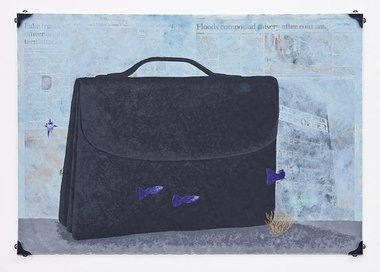
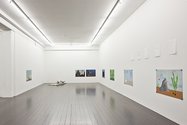
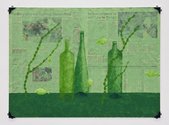
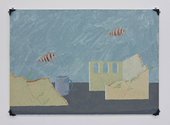
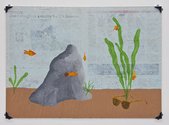

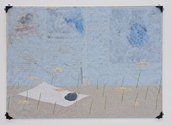
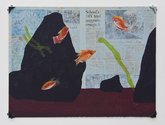
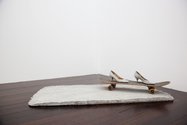
 Two Rooms presents a program of residencies and projects
Two Rooms presents a program of residencies and projects Advertising in this column
Advertising in this column



This Discussion has 0 comments.
Comment
Participate
Register to Participate.
Sign in
Sign in to an existing account.